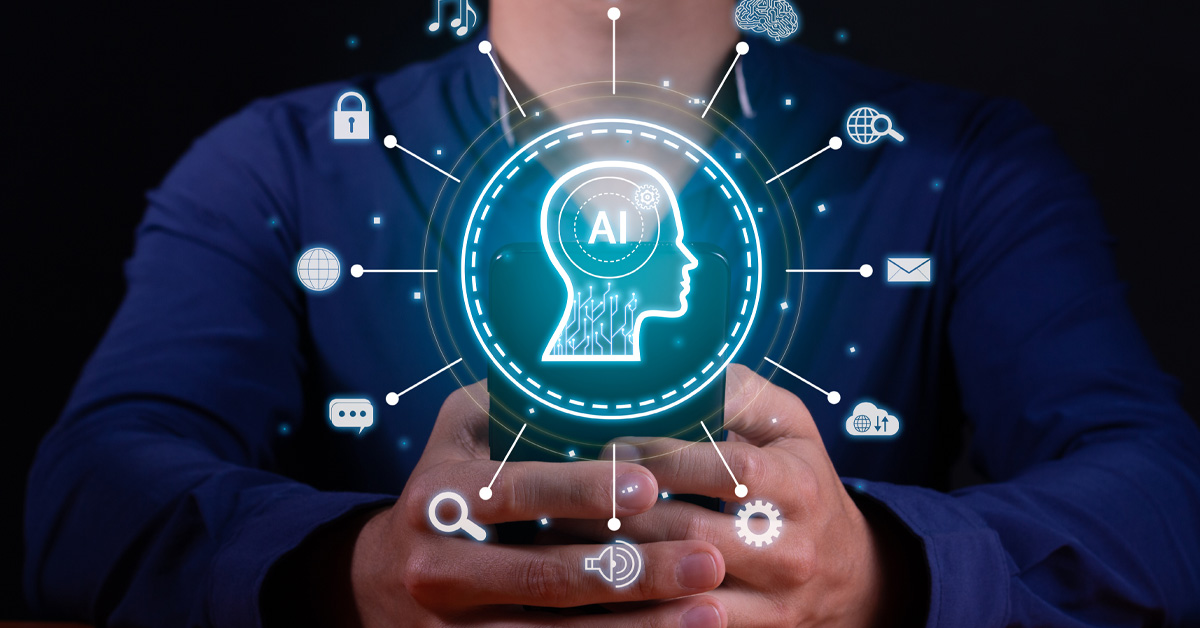
From addresses and birthdays to email addresses and credit card numbers, our personal data is increasingly finding its way online in this digital age. Despite the robust encryption and advanced authentication methods employed by many organisations, hackers are constantly on the lookout for system vulnerabilities to exploit.
Phishing scams and other online fraud methods may be commonplace, but we’ve learned to navigate these threats through education and awareness. Yet, a new threat looms on the horizon - Generative Artificial Intelligence (Gen AI).
Gen AI, with its deep learning algorithms, has transformed the way data is processed, analysed, and used. It can generate vast amounts of data at incredible speeds and mimic human-like behaviours and creations, including images, text, and even videos. While this innovation has opened new avenues in creativity and efficiency, it has also raised significant data privacy concerns, becoming an unwitting tool for malicious actors.
Forbes, in its article explored how "Gen AI And Its Malicious Impact On The Cyber-Physical Threat Landscape", which discusses how governments and organisations like Microsoft are concerned with imminent threat levels from AI, the article reasoned that the super speeds of AI processing can easily outpace the security measures of today. In particular, there are four areas of abuse that have the potential to lead to disastrous outcomes.
Social Manipulation
Generative AI, with its potent and versatile content creation capabilities, is increasingly being used to fabricate materials on traditionally trusted mediums. This synthetic data, which can range from false credentials and audio recordings to manipulated images and video footage, is alarmingly realistic. When used maliciously, such items can easily deceive individuals into divulging sensitive data or performing specific actions.
On a more layman level, malefactors can use deepfake technology to apply filters on video calls, tricking children into believing they are interacting with familiar faces. On a corporate level, a phishing campaign targeting a financial institution could employ AI-generated voice messages to impersonate top executives, thereby convincing employees to disclose crucial login credentials and access codes.
The widespread use of generative AI tools and the distribution of their content have blurred the lines between authentic and fabricated content. It’s becoming increasingly challenging to discern truth from fiction, with studies indicating that only 73% of individuals can accurately identify AI-generated speech. Distinguishing manipulated images also remains a significant challenge for many. What’s more concerning is the audacity of these tactics, as they infiltrate social media platforms and traditional advertisements to trick unsuspecting users.
Physical Infiltration
Numerous organisations and residential spaces have integrated aspects of the Internet of Things (IoT) into their environments. This network of internet-connected devices presents a potential target for malicious actors. Hackers can identify vulnerabilities in the smart grid system, such as weak authentication mechanisms, unsecured communication channels, or outdated software, and exploit them to gain control - hijacking data or even gaining physical access to restricted areas.
Hackers can employ generative AI algorithms to create sophisticated malware that exploits these identified vulnerabilities. In an extreme scenario, a group could paralyse an entire city by hacking into its power grid, thereby disabling common facilities or causing chaos to meet urgent demands. The speed at which these Gen AI-driven cyberattacks are produced and adapted makes them a formidable threat when unleashed.
Data Breaches
Gen AI processes massive amounts of data to form its output. This data, often sourced from the public domain, can be quickly correlated, aiding malicious actors in finding and exploiting personal data. The situation is exacerbated when unethical organisations sell user data to these abusers, who are often willing to pay a high price due to the potential benefits.
Surprisingly, it is sometimes the users themselves who contribute to these systems. One report found that 55% of data loss protection events involved users having submitted personally-identifiable data into generative AI sites. Shockingly, submissions of confidential documentation accounted for 40% of the attempts.
Given the novelty of this technology and its tools, the situation is comparable to the public revelation of workplace details and phone numbers on social media sites like Facebook. Without proper education and awareness, this issue is likely to worsen.
Technological Hijacking
At times, generative AI transitions from being a tool to becoming a weapon. As AI models and algorithms evolve and gain intelligence, they can be pilfered by hackers and used against others, including the parent company. Given that generative AI models are trained on vast amounts of data, requiring substantial investments in terms of time and money, they themselves become valuable assets. Unethical adversaries could easily instigate a competitive war by stealing these existing systems.
Challenges to Data Privacy in an Increasingly GenAI-Driven Future
As the power of generative AI becomes more widely used to drive innovation, enhance customer experiences and optimise operations, businesses must be fully prepared to meet a host of challenges to safeguard data privacy. It can be quite a daunting for three reasons:
- By its nature, AI algorithms are like black boxes, operating independently of its makers. It can be then difficult to understand how decisions are made, and to assess and anticipate any potential privacy implications.
- Because it requires a staggering amount of training data, this makes them the new "treasure boxes" of today, with a high visibility for hacks.
- As an emerging technology, the ethical use of its data is still a matter of debate. With far-reaching uses in digital marketing and education, the exposure to it can lead to more examples of abuse. This can undermine trust in information but also exacerbates privacy concerns as individuals struggle to control the dissemination of their personal data when no standards are in place.
Ethical Challenges and Moving Forward
Given these challenges, it’s crucial for businesses to place a high priority on ethics and responsible AI practices to ensure the ongoing protection of data privacy. Transparency and accountability are key to earning a user’s trust, and businesses must establish multi-layered defences against malicious actors. Additionally, robust protocols must be in place to mitigate damage when crises occur.
As businesses work alongside policymakers and civil society to develop a standardised and comprehensive regulatory framework, users should also adopt their own best practices to strengthen their data privacy. These measures include:
Data Minimisation: Restrict the amount of personal information you share online, including on social media, and only provide necessary details when required. If sensitive data is involved, ensure you read and understand the terms of use and storage.
Strong Authentication: Choose strong and unique passwords for each online account, and consider implementing multi-factor authentication (MFA) whenever available, even for emails as they can be data sources to harvest.
Encryption: When transmitting sensitive information online, ensure that the connection is encrypted using secure protocols such as HTTPS.
Privacy Tools: Leverage privacy-enhancing tools such as virtual private networks (VPNs), ad blockers, and incognito browsers to minimise your online footprint.
Stay Informed: Keep abreast of emerging privacy threats, particularly those related to the use of Gen AI. This is especially important when new tools or platforms are launched, as they can attract bad players due to high traffic and potentially weaker security.
Be Sceptical: Maintain a high level of alertness. Remember, once your information is out there, it’s out there for good. Be cautious of unsolicited requests for personal information and exercise skepticism when dealing with emails, messages, and websites.
In this Gen AI-driven era, the line between innovation and intrusion is thinning. As we embrace the digital revolution, we must also fortify our defences against the looming threats to our data privacy. It’s not just about protecting our personal information; it’s about safeguarding our identities, our personal freedom, and our future. The power to change the narrative lies in our hands. Let’s not be mere spectators in this digital arena.
Equip yourself with the knowledge and skills to navigate this complex landscape with SMU Academy's Generative AI Courses and weather the threats of tomorrow with ease.
